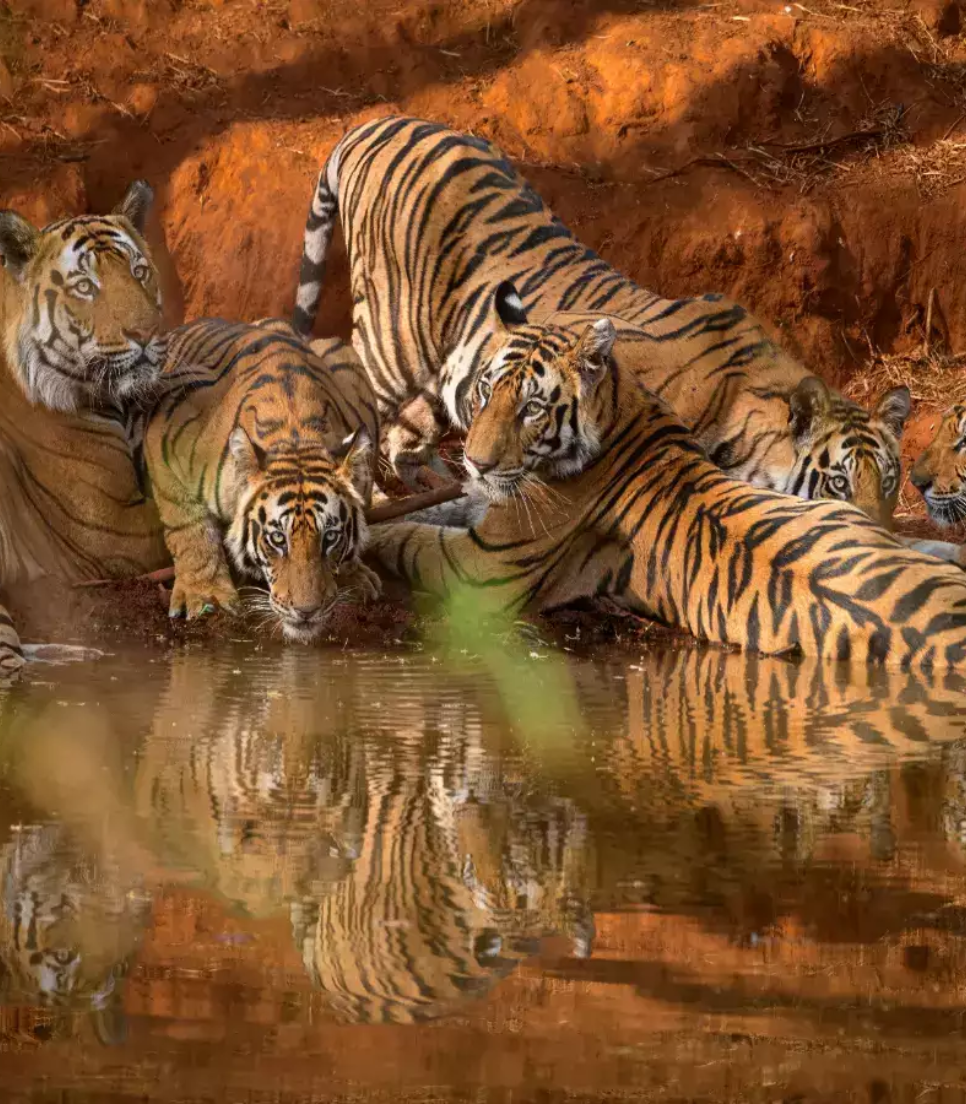Bandhavgarh National Park
Bandhavgarh National Park, situated in the Indian state of Madhya Pradesh, is a renowned wildlife sanctuary known for its high density of Bengal tigers and rich biodiversity. Covering an area of approximately 450 square kilometers (174 square miles), the park was established in 1968 and has gained fame as a prime destination for tiger sightings.
The name ‘Bandhavgarh’ came from two words: Bandhav and Garh where the meaning of the first one is brother and the latter means fort. According to Ramayana, the great epic, Bandhavgarh was gifted to Lakshmana by his elder brother Rama after the battle of Lanka. The existing national park is named after this legendary Bandhavgarh Fort, which is situated on a hillock of the Vindhya range in Umaria. As per the ancient books, Shiv Purana and Narad Panch Ratna, the wrecked fort was being rebuilt by two monkeys who made a bridge between Lanka and the mainland. The Bandhavgarh fort is written with much convincing evidence of human activity and architectural techniques. You can see several man-made caves with inscriptions and rock paintings at the fort as well.
Until the shifting of capital to Rewa in 1617 A.D., the local rulers were based in the Bandhavgarh Fort, which is located atop the Bandhavgarh hill in the middle of the Bandhavgarh National Park. Bandhavgarh gradually became desolate once the capital was moved to Rewa, and as the forest took over, it was used as a royal hunting reserve. While doing so helped to protect the forests and the indigenous fauna of India, each of the maharajas set out to kill 109 tigers because they believed it to be lucky. By 1914, Maharaja Venkat Raman Singh had killed 111 tigers.

